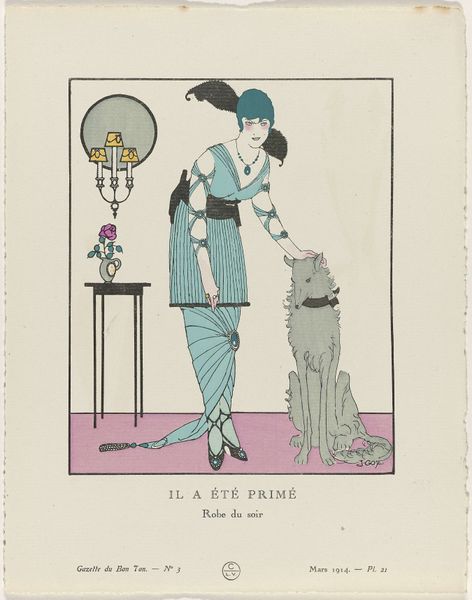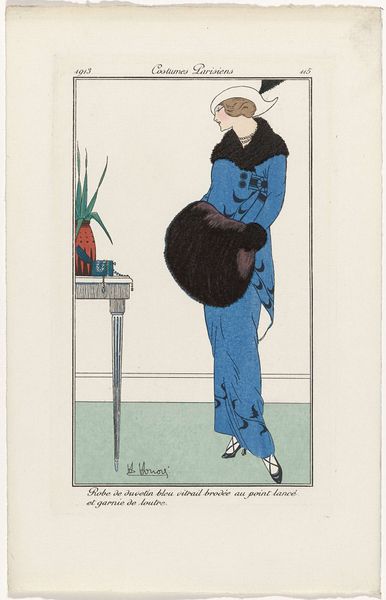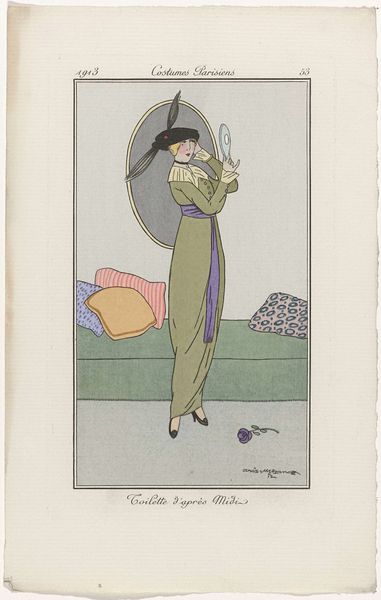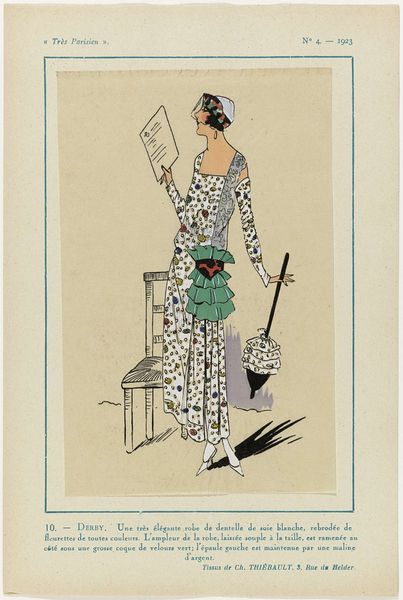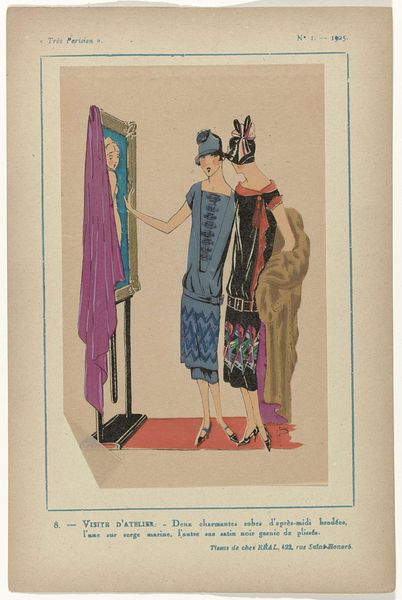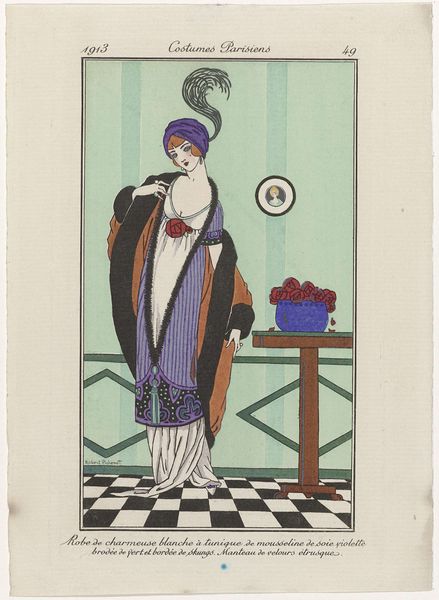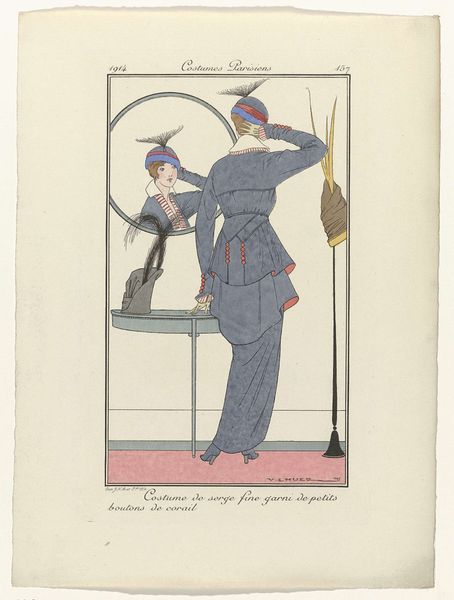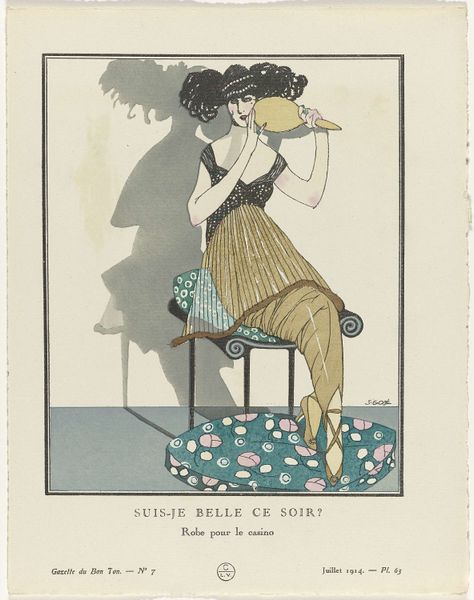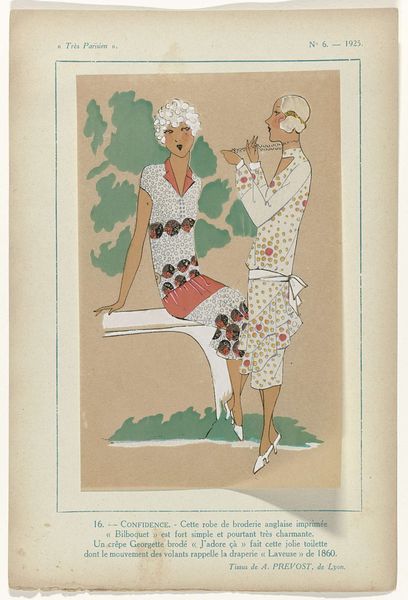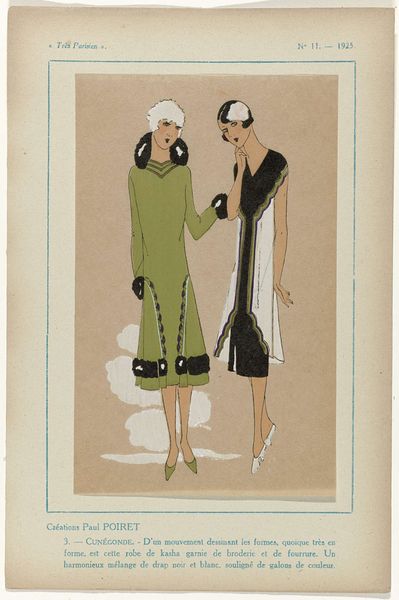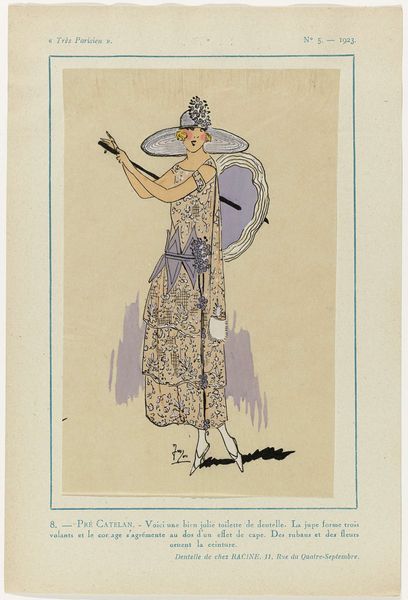
Gazette du Bon Ton, 1914 - No. 3, Pl. 29: La fumée noire / Robe du soir de Redfern 1914
0:00
0:00
Dimensions: height 245 mm, width 191 mm
Copyright: Rijks Museum: Open Domain
Curator: Let's consider this watercolor illustration, titled "La Fumée Noire/ Robe du soir de Redfern," which roughly translates to "Black Smoke, Evening Gown by Redfern," originating from the 1914 Gazette du Bon Ton. What are your initial thoughts? Editor: My immediate impression is of stillness, a certain languid elegance caught in a moment of repose. The limited color palette also draws me in – the contrast of cool grays and blues offset by that pop of intense, almost jarring, green. Curator: The composition definitely evokes stillness through its careful arrangement of vertical and horizontal lines. The figure's posture echoes the verticality of the room, and the horizontal lines in the background architecture help to give it stability. Tell me, how does the image speak to you, Iconographer? Editor: Well, the title "Black Smoke" coupled with the opium pipe in her hand cannot be ignored, this print really encapsulates the Art Nouveau period with an interest in escapism, intoxication, or perhaps boredom with contemporary bourgeois norms. Curator: Yes, I see your point. The semiotics of the object suggests a hidden subtext. Note that the artist, Ludwik Strimpl, repeats rectangular geometric shapes— in the architectural elements, like the alcove in the upper-right and lower left– this brings in the notion of looking into framed worlds or scenes, lending a theatrical aura to the moment depicted. Editor: Exactly! Also consider the colors chosen; green with its historical associations with envy or illness contrasts against the passivity implicit in the grays to make us really feel her languor. We also get to read a continuity through the ages, black smoke, or dark vapours has always pointed to ennui, the darker side of consciousness that we must come to terms with as beings that exist within consciousness. Curator: It is truly fascinating to consider how Strimpl constructs space. Editor: Yes, and through that very construction, reveals layers of meaning about beauty, culture and our human condition. Curator: Precisely. An exercise in semiotics as well as symbolic cultural associations with various colours in order to generate meanings. Editor: Yes, through its refined lines and somber atmosphere, the piece creates a lasting imprint, revealing deeper emotional currents beneath the surface of Jazz Age Paris.
Comments
No comments
Be the first to comment and join the conversation on the ultimate creative platform.
